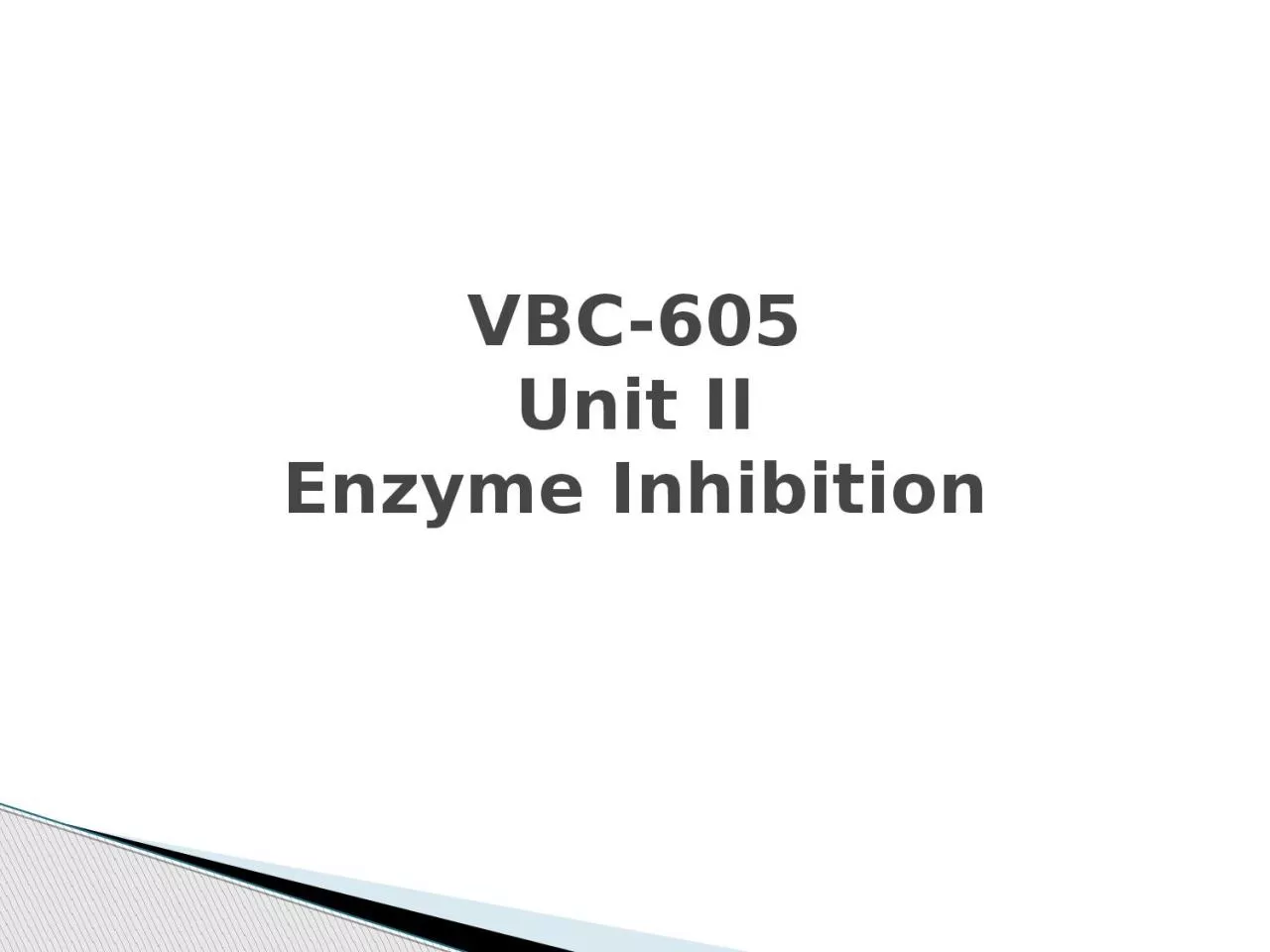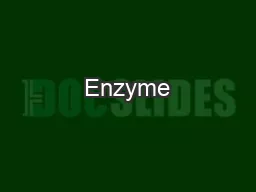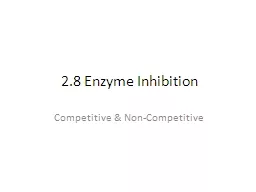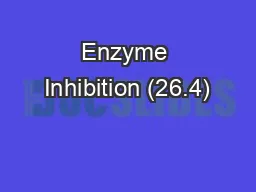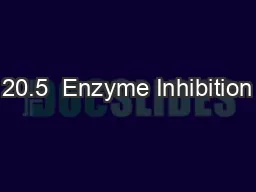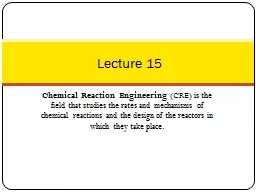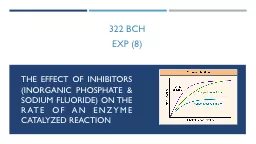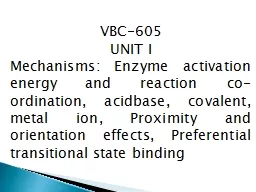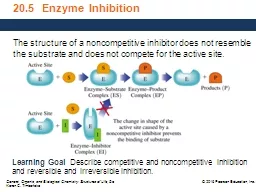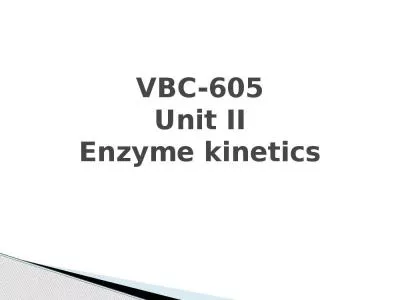PPT-VBC-605 Unit II Enzyme Inhibition
Author : okelly | Published Date : 2022-07-01
Inhibition The decrease in enzyme activityloss of activity exert effect by decreasing affinity of the enzyme for the substrate decreasing the amount of active enzyme
Presentation Embed Code
Download Presentation
Download Presentation The PPT/PDF document "VBC-605 Unit II Enzyme Inhibition" is the property of its rightful owner. Permission is granted to download and print the materials on this website for personal, non-commercial use only, and to display it on your personal computer provided you do not modify the materials and that you retain all copyright notices contained in the materials. By downloading content from our website, you accept the terms of this agreement.
VBC-605 Unit II Enzyme Inhibition: Transcript
Download Rules Of Document
"VBC-605 Unit II Enzyme Inhibition"The content belongs to its owner. You may download and print it for personal use, without modification, and keep all copyright notices. By downloading, you agree to these terms.
Related Documents

